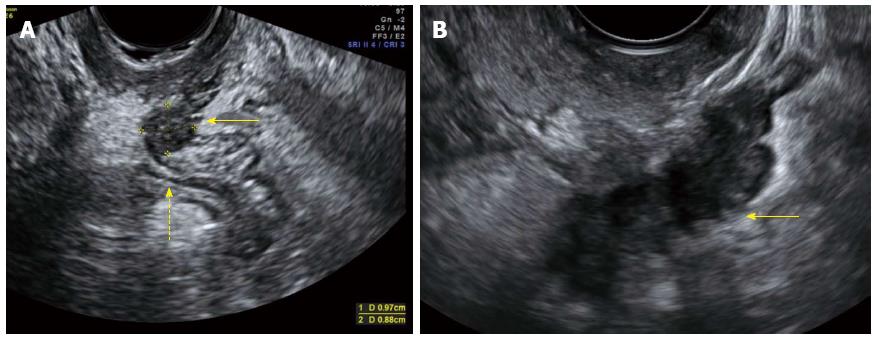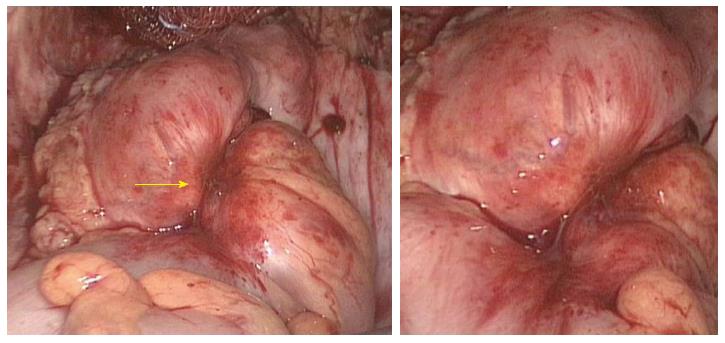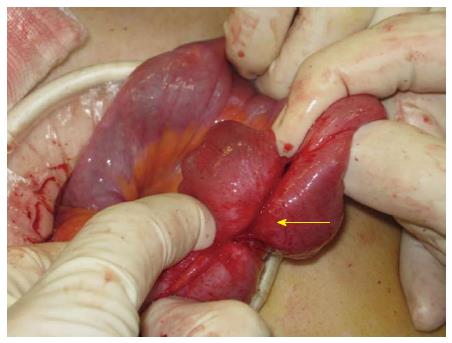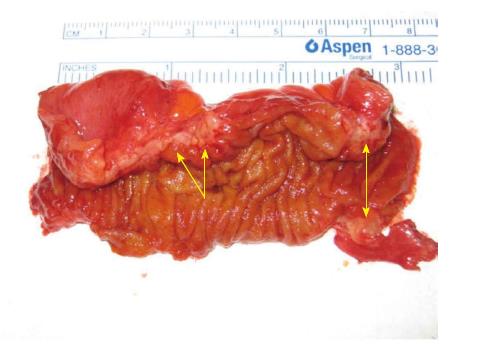Copyright
©2014 Baishideng Publishing Group Inc.
World J Gastroenterol. Nov 14, 2014; 20(42): 15616-15623
Published online Nov 14, 2014. doi: 10.3748/wjg.v20.i42.15616
Published online Nov 14, 2014. doi: 10.3748/wjg.v20.i42.15616
Figure 1 Transvaginal ultrasound image, sagittal view.
A: Hypoechoic nodule in the rectovaginal septum measuring 1 cm × 0.9 cm (arrow). The nodule obliterates the pouch of Douglas, invades the anterior rectal wall, and causes anatomical distorsion (dotted arrow); B: A large hypoechoic retrocervical nodule affecting the rectosigmoid colon is seen (arrow). Note the typical “indian headdress sign”, indicating deep endometriosis into the bowel wall.
Figure 2 Barium enema, sagittal view.
A: Extrinsic mass compressing the rectum secondary to severe pelvic endometriosis (arrow); B: Stricture of the sigmoid colon secondary to endometriosis (arrow). Note the fine crenulation of the mucosa (dotted arrow).
Figure 3 Laparoscopic view of bowel endometriosis invading the sigmoid colon (arrow).
Same patient as in Figure 2B.
Figure 4 Small bowel adhesions secondary to invasion by endometriosis (arrow).
Figure 5 Segmental enterectomy (8 cm) for small bowel endometriosis.
The bowel is cut open longitudinally. Note the two foci of non-transmural endometriosis (arrows) obliterating the bowel lumen.
- Citation: Wolthuis AM, Meuleman C, Tomassetti C, D’Hooghe T, de Buck van Overstraeten A, D’Hoore A. Bowel endometriosis: Colorectal surgeon’s perspective in a multidisciplinary surgical team. World J Gastroenterol 2014; 20(42): 15616-15623
- URL: https://www.wjgnet.com/1007-9327/full/v20/i42/15616.htm
- DOI: https://dx.doi.org/10.3748/wjg.v20.i42.15616













